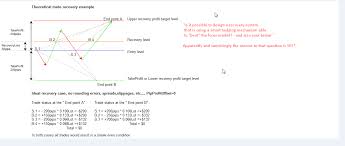
Currency options, a derivative type, allow investors the opportunity to protect against the possibility that exchange rates may change. These options may be purchased using a variety of methods.
A forex broker can be used to trade currency options. The forex broker will assume the risk for the investor, and charge a fee. This is an ideal way for novices to get into the forex market. They can trade small amounts of money with minimal risk.
NASDAQ OMX also offers currency options, including those on the Australian Dollar, British Pound, Canadian Dollar, Euro, Japanese Yen, Swiss Franc, etc. These options have a wide range of expiration dates, strike prices and are cash settled.

Also, you can buy foreign currency through a regulated trading exchange like the Chicago Mercantile Exchange. These exchanges allow you to choose from a number of standard maturity dates and quoting option options, but are not as flexible.
The main advantage of currency options is that they allow you to hedge against changes in the value of a currency without the cost of buying the actual currency. They can also be used to speculate in the market, with the prospect of making money if the price of the currency is above or below the option's strike price when the option expires.
There are many ways to trade currency depending on the amount of money you want to invest. Some people include them in a larger investment portfolio while others use them only for pure speculation.
How to trade in currency options
Trading currency options involves complex instruments and a risk of loss. They are not suitable for everyone, so it is important to do your research and understand what they are before you enter into a transaction.

Forex options include futures, options and FX futures. FX forwards and swaps can also be traded.
Forex options are a popular financial instrument and can be traded by anyone with an interest in the world of currencies. They can be used for both hedging and speculative purposes, although it is important to remember that they are very volatile and can result in you losing your initial investment.
How to trade currency options
There are basically two types of options in forex: Call and Put. Calls give you the option to buy a particular currency for a specified period of time. Puts, on the other hand, allow you to sell the currency for that same time. The price for the option is based upon a combination of strike price and exchange rate.
FAQ
What is security on the stock market?
Security is an asset which generates income for its owners. Most common security type is shares in companies.
A company may issue different types of securities such as bonds, preferred stocks, and common stocks.
The earnings per shares (EPS) or dividends paid by a company affect the value of a stock.
You own a part of the company when you purchase a share. This gives you a claim on future profits. If the company pays you a dividend, it will pay you money.
You can sell shares at any moment.
What Is a Stock Exchange?
A stock exchange allows companies to sell shares of the company. This allows investors the opportunity to invest in the company. The market sets the price for a share. It is usually based on how much people are willing to pay for the company.
Companies can also raise capital from investors through the stock exchange. Companies can get money from investors to grow. They buy shares in the company. Companies use their money to fund their projects and expand their business.
Stock exchanges can offer many types of shares. Some shares are known as ordinary shares. These are the most common type of shares. Ordinary shares can be traded on the open markets. Prices for shares are determined by supply/demand.
There are also preferred shares and debt securities. When dividends are paid out, preferred shares have priority above other shares. The bonds issued by the company are called debt securities and must be repaid.
What is a bond?
A bond agreement is a contract between two parties that allows money to be transferred for goods or services. It is also known as a contract.
A bond is usually written on paper and signed by both parties. This document details the date, amount owed, interest rates, and other pertinent information.
A bond is used to cover risks, such as when a business goes bust or someone makes a mistake.
Many bonds are used in conjunction with mortgages and other types of loans. This means the borrower must repay the loan as well as any interest.
Bonds are used to raise capital for large-scale projects like hospitals, bridges, roads, etc.
When a bond matures, it becomes due. This means that the bond owner gets the principal amount plus any interest.
Lenders can lose their money if they fail to pay back a bond.
Is stock a security that can be traded?
Stock is an investment vehicle that allows investors to purchase shares of company stock to make money. This is done by a brokerage, where you can purchase stocks or bonds.
You could also choose to invest in individual stocks or mutual funds. There are over 50,000 mutual funds options.
The key difference between these methods is how you make money. Direct investment earns you income from dividends that are paid by the company. Stock trading trades stocks and bonds to make a profit.
In both cases, you are purchasing ownership in a business or corporation. However, if you own a percentage of a company you are a shareholder. The company's earnings determine how much you get dividends.
Stock trading offers two options: you can short-sell (borrow) shares of stock to try and get a lower price or you can stay long-term with the shares in hopes that the value will increase.
There are three types to stock trades: calls, puts, and exchange traded funds. Call and put options let you buy or sell any stock at a predetermined price and within a prescribed time. ETFs, which track a collection of stocks, are very similar to mutual funds.
Stock trading is a popular way for investors to be involved in the growth of their company without having daily operations.
Stock trading can be a difficult job that requires extensive planning and study. However, it can bring you great returns if done well. To pursue this career, you will need to be familiar with the basics in finance, accounting, economics, and other financial concepts.
Statistics
- Individuals with very limited financial experience are either terrified by horror stories of average investors losing 50% of their portfolio value or are beguiled by "hot tips" that bear the promise of huge rewards but seldom pay off. (investopedia.com)
- The S&P 500 has grown about 10.5% per year since its establishment in the 1920s. (investopedia.com)
- Our focus on Main Street investors reflects the fact that American households own $38 trillion worth of equities, more than 59 percent of the U.S. equity market either directly or indirectly through mutual funds, retirement accounts, and other investments. (sec.gov)
- Even if you find talent for trading stocks, allocating more than 10% of your portfolio to an individual stock can expose your savings to too much volatility. (nerdwallet.com)
External Links
How To
How to create a trading strategy
A trading plan helps you manage your money effectively. It allows you to understand how much money you have available and what your goals are.
Before you create a trading program, consider your goals. You may want to make more money, earn more interest, or save money. You may decide to invest in stocks or bonds if you're trying to save money. You can save interest by buying a house or opening a savings account. You might also want to save money by going on vacation or buying yourself something nice.
Once you have an idea of your goals for your money, you can calculate how much money you will need to get there. This depends on where you live and whether you have any debts or loans. Also, consider how much money you make each month (or week). Your income is the net amount of money you make after paying taxes.
Next, make sure you have enough cash to cover your expenses. These include bills, rent, food, travel costs, and anything else you need to pay. Your monthly spending includes all these items.
Finally, figure out what amount you have left over at month's end. That's your net disposable income.
This information will help you make smarter decisions about how you spend your money.
Download one online to get started. Ask an investor to teach you how to create one.
Here's an example: This simple spreadsheet can be opened in Microsoft Excel.
This will show all of your income and expenses so far. This includes your current bank balance, as well an investment portfolio.
Another example. A financial planner has designed this one.
It will allow you to calculate the risk that you are able to afford.
Don't attempt to predict the past. Instead, think about how you can make your money work for you today.